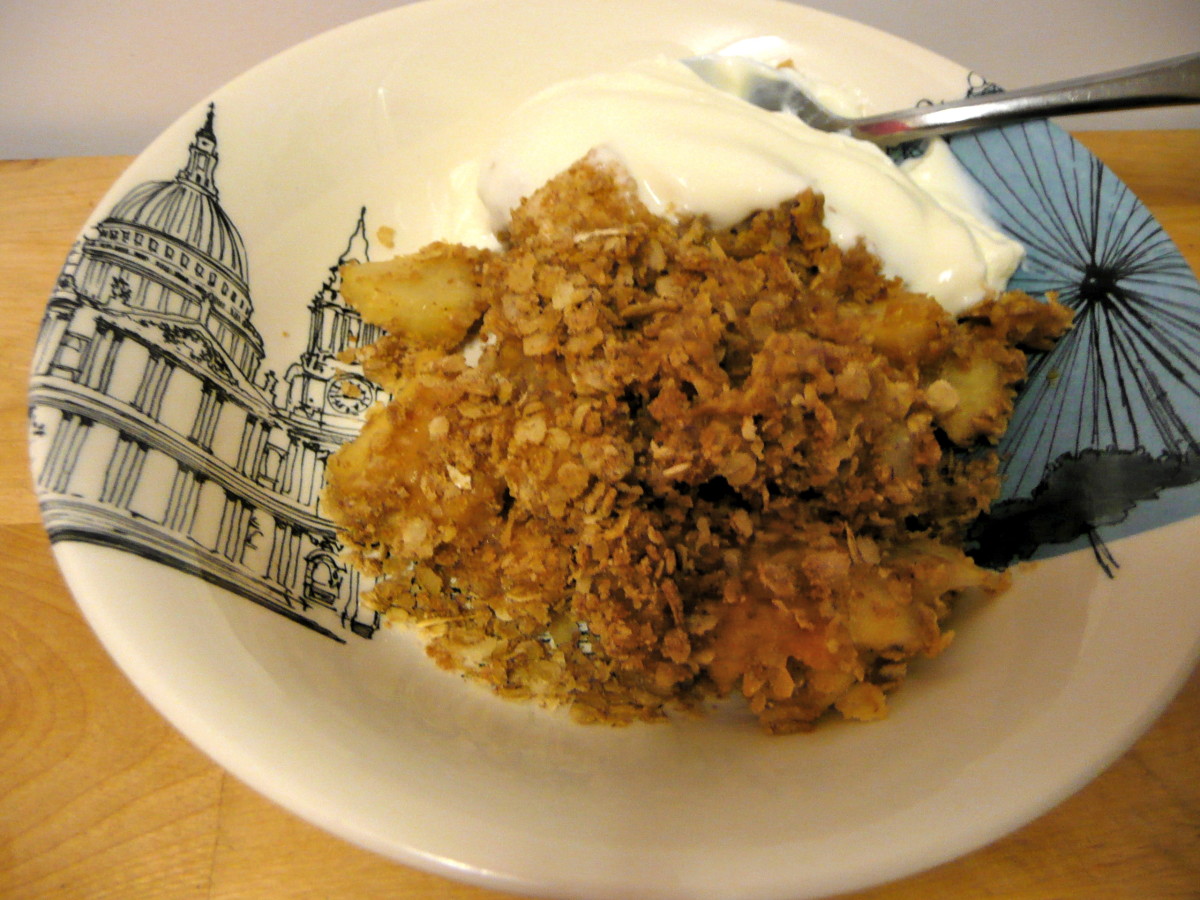When Food Bites Back: Identifying food intolerances

Food. It provides nourishment, comfort and camaraderie. You can't live without eating. Social events tend to revolve around meals or snacks or drinks and hors d'oevres. You just can't escape calories. Which is why it comes as such a surprise when food bites back. Of course, when indigestion first strikes, people tend to dismiss it. They blame greasy fries, too many chips, or eating on the run. They dose themselves in antacids and other digestive aids, they try adding yoghurt or fiber to their diet. Sometimes it works. Sometimes, they have to dig deeper in order to find the cause.
A doctor can help you eliminate any physical causes for digestive issues such as ulcers, polyps or gall stones. They can test you for Celiac Disease and Lactose intolerance. But in the end, if your symptoms are persistent but mild, you'll see their white-coated shoulders shrug and hear the ominous words "It could be stress."
Of course, finding nothing seriously wrong is good news. But it doesn't give you any answers. And if you don't feel good, you don't function well and that raises your stress level even higher. If the real root of your problem is what you're eating, it’s hard to eat anything at all.
Once you've ruled out any specific treatable cause for digestive discomfort, it's time to do some personal legwork. It's not normal to live in pain, to be bloated, or to pop antacids like breath mints. So if eating hurts, there has to be a reason.
Allergy or Intolerance?
Approximately 4% of the population have a full blown allergy to specific foods, the percentage with a food intolerance is much higher. The difference between the two conditions is simply semantics. A food allergy is triggered by the IgE cells in your immune system, and can lead to anaphylactic shock. A food intolerance can be caused by either IgG cells or a lack of specific enzymes to digest certain foods. It leads to a lot of discomfort, but is rarely fatal in and of itself.
An allergist can help with a classic food allergy. The reactions tend to be more clear cut, easy to diagnose and the treatment is total avoidance. Those with a classic allergy are often told to carry injectable epinephrine with them at all times, just in case.
Lucky for intolerance sufferers, their lives aren't in danger. Unfortunately, because the symptoms are more vague and often dose dependant, tracking down the offensive food group can be problematic. A buttered cake pan may not cause a problem, making them think butter is okay. But add buttercream frosting and there's enough dairy to double them over. If the symptoms are manageable, some people just give up. Others turn to fad diets in search of healing.
Trouble with Fads
These fad diets may appear to help for awhile, but mostly because they inherently eliminate a variety of common irritants. Sometimes, a new diet will backfire and cause worsening symptoms because in eliminating so called 'bad' foods the problematic ones are used more frequently.
The real trouble with fad diets is that by labeling foods as inherently good or bad, acceptable or unacceptable, they not only fail to address the issue of food intolerance, they set up an unhealthy relationship with food and can lead to a diet that is severely limited. That's why before slashing food groups from your diet, you should start a food diary. It sounds obvious, so simple, but it’s amazing how many people never think about writing down what they eat and when symptoms occur. They sit in a doctor's office, squint at the ceiling and try their best to remember whether or not there was a pattern to their reactions.

Keeping a Food Diary
Start by choosing a notebook. Any size will work but you want to be comfortable using it and you don't want to lose it between snacks or meals. You also want to be able to read it easily, which makes something around 5'x7' ideal.
Fold the first page in half. On one side, write ‘food’ and on the other write ‘symptoms‘. Now every time you eat, put the approximate time down and list everything included in the meal or snack. ‘Bologna sandwich’ is good, but 'bologna sandwich on white bread with lettuce, tomato and mayo" is better. Don't forget that apple, or the soda, or the chips (brand name and flavor) you had on the side. Don't be ashamed of that mid morning donut or the candy bars you nabbed from the communal candy dish. You don’t have to share this diary with anyone. You aren’t counting calories. You're looking for patterns. Write anything and everything down.
Don’t forget the symptoms! We don’t just need to know what you eat, we need to know what’s causing symptoms. So whenever you have symptoms, log those on the 'symptoms' side of your paper. Don't just write ‘Headache‘. Put the time and give it an intensity rating between 1 and 5, 1 being noticeable and 5 requiring a trip to the hospital. Include anything else going on that you suspect may have triggered those symptoms. Anything from a fight with your boss to a heat wave counts.
After a few days, go over your diary. Highlight trends. Then see if you've ever experienced those triggers and NOT had symptoms afterward. Those are your highest suspect trigger foods. Don't discount anything as illogical. If there are a lot of foods on your suspect list, see if you can figure out what they have in common. If you react to a long list of veggies, do you usually serve them drizzled in oil? Or soy sauce? Or dipped in ranch dressing? It might not be the veggie, but the dip. If you react to fries, pizza, pasta and salad...maybe your real issue is tomatoes (found in ketchup, tomato paste and marinara sauce) or a specific herb or seasoning.
Elimination and Reintroduction
The next step isn't to assume you've tracked down the culprit. The next step is to use elimination in order to see if you have identified the culprit. It's a tricky process.
First, eliminate all of the foods on your suspect list from your diet, and evaluate how you feel. Don't abandon that food diary, keep it going for the duration of the process. Yes, it's a pain but it's worth it. Hopefully, you'll feel a lot better. If not, keep looking.
Once you've been feeling great for a good week, re-introduce a single food you really can't believe is a problem. Make sure you use a whole form, such as a tomato instead of ketchup. Don't analyze your feelings, just keep your diary going. If the first time you reintroduce the food you seem to feel okay, keep using it every few days for at least a week or two while continuing to avoid the rest of the foods on your suspect list. And, of course, continue with your symptom diary!
Drawing Conclusions
Look over your diary again. If there isn’t a trend in reactions, that food gets crossed off your list and can be added back to your regular diet. Go on to the next suspect food and follow the same process, and the next. Continue documenting, and leave at least a week between reintroductions so that you can look back over the diary and identify reactions that don't happen immediately.
If you do identify a trigger food, just continue eliminating it and move on to your next suspect food, continuing the one-food at a time trial. It's possible, even common, to have more than one trigger food.
If you still end up with a long list of unsafe items, there may be a connection between them. If the connection isn’t obvious, you might try an internet search. Type three or four trigger foods into your favorite search engine along with the word 'reaction' or 'indigestion' or 'IBS'. You might find that they are part of the same food group. It's a lot easier to remember that you are allergic to citrus than that you react to lemon juice, oranges and lime zest. Besides, if you know you're reacting to several foods in the same family, you'll know that any others are suspect too. Which means if you react to most citrus, you won't be taking your first bite of grapefruit a few hours before your wedding starts or a big job interview.
Common food triggers include dairy, wheat, grains, refined sugar, chocolate and night shades. Other food components that can cause physical symptoms include MSG, aspartame, salicylates and artificial food colorings. It's possible to react to just about anything, though, so keep an open mind as you look over your suspect list and food/symptom diary.
Once you've narrowed your suspect list down, you might want to bring it and your symptom diary back to your doctor. There's a good chance all he can say is 'if eating xyz hurts, don't eat xyz'. And there's a slight chance that he won't believe in food intolerances. But sometimes a proven connection to specific foods could indicate another issue. It never hurts to double check with a medical professional. Wouldn't it be great if there was a way to treat your intolerance besides simple avoidance?
People with a lactose intolerance are able to use enzymes to help them tolerate dairy in small amounts. There may be options for other intolerances as well. And if not, at least you know what's causing your symptoms and how to avoid them. Knowledge is power, and identifying your food intolerance gives you control over it.
Food is meant to be a pleasurable experience, not just for your taste buds but for your body. Giving up something that tastes good can be a challenge, but remember that what you eat tastes twice as good if it stays down and keeps you feeling healthy. Food intolerances aren‘t fun, but they are manageable and identifying the root of the problem is much more satisfying than suffering. At the very least, you will have more control over your symptoms once you know what causes them. You aren't at the mercy of the buffet if you know what to look for and avoid. Which means you’ll be free to enjoy the rest of the evening, pain free.






